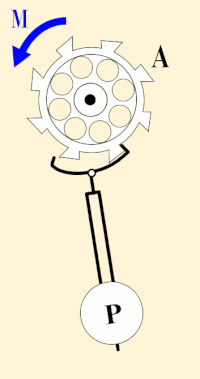
Photo from wikipedia
Engineering a Hamiltonian system with tunable interactions provides opportunities to optimize performance for quantum sensing and explore emerging phenomena of many-body systems. An optical lattice clock based on partially delocalized… Click to show full abstract
Engineering a Hamiltonian system with tunable interactions provides opportunities to optimize performance for quantum sensing and explore emerging phenomena of many-body systems. An optical lattice clock based on partially delocalized Wannier-Stark states in a gravity-tilted shallow lattice supports superior quantum coherence and adjustable interactions via spin-orbit coupling, thus presenting a powerful spin model realization. The relative strength of the on-site and off-site interactions can be tuned to achieve a zero density shift at a “magic” lattice depth. This mechanism, together with a large number of atoms, enables the demonstration of the most stable atomic clock while minimizing a key systematic uncertainty related to atomic density. Interactions can also be maximized by driving off-site Wannier-Stark transitions, realizing a ferromagnetic to paramagnetic dynamical phase transition.
Journal Title: Science Advances
Year Published: 2022
Link to full text (if available)
Share on Social Media: Sign Up to like & get
recommendations!